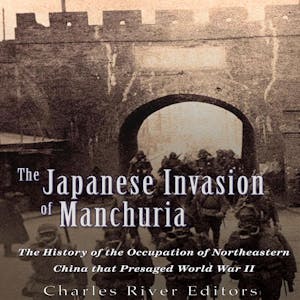Though scarcely mentioned in the world of early 21st century politics, Manchuria represented a key region of Asia during the first half of the 20th century. Once the heartland of the fierce Manchu empire, this northeastern Chinese region's rich natural resources made it a prize for nations in the process of entering the modern age, and three ambitious nations in the midst of such a transformation lay close enough to Manchuria to attempt to claim it: Japan, Russia, and China.
For countries attempting to shake off their feudal past and enter a dynamic era of industrialization, Manchuria's resources presented an irresistible lure. With immense natural resources coupled to economic activity more concentrated than elsewhere in China, this region, abutting Mongolia, Korea, the Yellow Sea, and the Great Wall “accounted for 90 percent of China’s oil, 70 percent of its iron, 55 percent of its gold, and 33 percent of its trade. If Shanghai remained China’s commercial center, by 1931 Manchuria had become its industrial center.” (Paine, 2012, 15).
Thus, it’s not altogether surprising that Japan's invasion of Manchuria in 1931 resulted from a long, complex chain of historical events stretching back to the late 19th century. Approximately 380,000 square miles in extent, or 1.4 times the size of the American state of Texas, Manchuria came into Imperial Russia's possession in 1900 due to the “Boxer Rebellion” in China, but the Russians held it only briefly; their defeat in the Russo-Japanese War shook loose their control from important parts of Manchuria by the end of 1905.
The Japanese gained two important footholds in Manchuria thanks to their victory. One consisted of Port Arthur (renamed Ryojun by the Japanese), an economically and strategically vital harbor city on the Liaodung Peninsula, plus the peninsula itself. The other comprised the South Manchurian Railway, which the Russians gave to the Japanese as a prize of war, in lieu of a cash indemnity. The Japanese subsequently formed the South Manchurian Railway Company, mostly owned by the Japanese Army, and Japanese civilians began investing heavily in Manchuria's lucrative industries. Tens of thousands of entrepreneurs flooded into Manchuria, greatly strengthening Japan's interests in the area. The Japanese Army stepped up their presence in this economically vital region, creating a quasi-independent military force and government known as the “Kwantung Army.”
Naturally, the Chinese also wanted their portion of the tempting Manchurian feast. Unable to go head to head with the organized, thoroughly militaristic Japanese, they sent some 6 million emigrant laborers and settlers into the area as a sort of “demographic occupation.” Nominally Chinese but subject to massive Japanese investment and military infiltration, filled with bandits and rival chieftains, Manchuria hovered on the brink of another conflict in the 1920s.
The Kwantung Army deliberately shoved it over that brink in 1931, and the Japanese invasion and occupation of Manchuria is sometimes described as the true beginning of World War II. At the very least, it marked the expansion of Japan’s imperial empire, its ongoing friction with China, and what would turn into a Chinese resistance campaign that would last nearly 15 years until the end of World War II. Given its importance, the invasion of Manchuria continues to be remembered as one of the seminal events of the 20th century.
The Japanese Invasion of Manchuria: The History of the Occupation of Northeastern China that Presaged World War II examines the important events in northeastern China.
